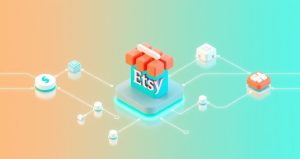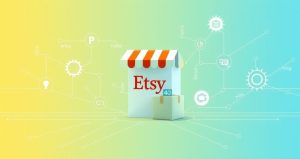Running a successful Etsy shop involves much more than just creating beautiful products. It requires managing inventory, processing orders, handling shipping, marketing your listings, and tracking finances. As your business grows, these manual tasks can become overwhelming. This is where Etsy integrations come into play. By connecting your shop to third-party applications and services, you can automate repetitive tasks, streamline your workflow, and unlock powerful new functionalities. This guide explores the world of Etsy integrations, helping you understand how they can transform your business operations.
Understanding Etsy Integrations
An Etsy integration is essentially a digital bridge that connects your Etsy shop to another software or platform. This connection allows data to flow automatically between the two systems, eliminating the need for manual data entry and reducing the risk of human error. For example, instead of manually copying and pasting customer addresses into a shipping carrier’s website, an integration can pull order details directly from Etsy, allowing you to print shipping labels with a single click. These tools are designed to extend the core functionality of the Etsy platform.
The primary goal of using Etsy integrations is to improve efficiency. They handle the administrative side of your business so you can focus on what you do best: creating products and engaging with your customers. From automating social media posts to syncing your sales data with accounting software, these connections empower you to manage a larger volume of orders without needing to work longer hours. They are essential tools for any seller looking to scale their operations and build a more sustainable and profitable online business.
Key Benefits of Using Etsy Integrations
Implementing the right applications can provide a significant competitive advantage. The benefits extend beyond simple convenience, impacting your shop’s profitability, customer satisfaction, and overall scalability. By automating key processes, you free up valuable time and mental energy, which can be reinvested into product development, marketing strategy, or customer service. This shift from administrative work to growth-focused activities is a critical step in professionalizing your Etsy shop and achieving long-term success.
Time-Saving Automation
The most immediate benefit of using Etsy integrations is the amount of time you save. Tasks that once took hours, such as creating shipping labels for dozens of orders or updating inventory levels, can be completed in minutes. Marketing integrations can automatically share your new listings on social media platforms like Pinterest and Instagram, ensuring a consistent online presence without constant manual effort. This automation allows you to run your business more efficiently, preventing burnout and enabling sustainable growth for your Etsy shop.
Enhanced Inventory Management
For sellers who operate on multiple platforms, such as an Etsy shop and a personal website, inventory management is a major challenge. Overselling an item can lead to canceled orders and negative reviews. An inventory management integration syncs your stock levels across all sales channels in real time. When a product sells on Etsy, its quantity is automatically updated on your other stores, and vice versa. This ensures accurate stock counts and provides a seamless shopping experience for your customers, regardless of where they buy.
Streamlined Financial Tracking
Keeping track of income, expenses, and Etsy fees is crucial for tax purposes and for understanding your business’s financial health. Manually entering this data into a spreadsheet is not only tedious but also prone to errors. Accounting Etsy integrations, such as those for QuickBooks or GoDaddy Bookkeeping, automatically import your sales and expense data. This simplifies bookkeeping, makes tax preparation easier, and gives you a clear, up-to-date overview of your profitability without the headache of manual record-keeping.
Essential Types of Etsy Integrations
The Etsy marketplace supports a wide variety of integrations, each designed to solve a specific problem for sellers. Choosing the right ones depends on your business model, product type, and biggest operational challenges. Whether you sell physical goods, digital downloads, or print-on-demand items, there is likely an integration that can make your life easier. Below, we explore some of the most essential categories of integrations that sellers use to optimize their shops and drive growth.
1. Shipping and Fulfillment Integrations
Shipping is often one of the most time-consuming aspects of running an Etsy shop. Shipping integrations streamline this entire process. These services connect directly to your shop to import order information automatically. They allow you to compare rates from different carriers, purchase and print shipping labels in bulk, and automatically send tracking information back to your customers. This not only saves immense time but also helps reduce shipping costs and minimize errors in addressing packages.
2. Print-on-Demand (POD) Services
Print-on-demand integrations are a game-changer for artists, designers, and entrepreneurs who want to sell custom merchandise without holding inventory. When a customer purchases an item like a t-shirt, mug, or poster from your Etsy shop, the order is sent directly to your POD partner. This partner then prints your design on the product, packages it, and ships it directly to the customer. This model eliminates upfront costs and the risks associated with managing physical stock.
3. Accounting and Bookkeeping Software
Accurate financial management is non-negotiable for any serious business. Accounting integrations connect your Etsy shop to platforms that organize your financial data. They categorize your sales, Etsy fees, marketing expenses, and material costs, providing a clear picture of your cash flow and profit margins. These tools are invaluable during tax season, as they can generate the reports your accountant needs, saving you time and ensuring compliance with financial regulations.
4. Marketing and Social Media Automation
Consistently promoting your products is key to driving traffic and sales, but it can feel like a full-time job. Marketing Etsy integrations help automate this process. These tools can schedule social media posts to showcase your listings, create promotional videos, or manage your email marketing campaigns. By putting your marketing on autopilot, you can maintain a strong online presence and attract new customers without being tied to your computer or phone all day.
5. Multi-Channel Sales Platforms
For established sellers looking to expand their reach beyond Etsy, multi-channel management tools are essential. These platforms allow you to list your products on Etsy, your own Shopify store, Amazon, and other marketplaces from a single dashboard. They sync inventory, orders, and product information across all channels, providing a centralized system for managing your entire e-commerce empire. This approach helps you diversify your income streams while maintaining operational control.
How to Choose the Right Etsy Integration
With so many options available, selecting the best Etsy integrations for your shop can seem daunting. The key is to start by identifying your most significant pain points. Are you spending too much time on shipping? Is inventory management becoming a nightmare? Once you know what problem you need to solve, you can search for a tool that offers a targeted solution. It is also important to consider your budget, read reviews from other sellers, and take advantage of free trials to ensure the service is a good fit for your workflow.
Assess Your Needs and Budget
Before committing to an integration, carefully evaluate its features and pricing structure. Some services charge a flat monthly fee, while others operate on a per-transaction basis. Determine what you can realistically afford and whether the potential time savings and increased efficiency justify the cost. For example, a shipping integration that costs $30 per month may be well worth it if it saves you ten hours of work, allowing you to focus on creating new products that generate far more revenue.
Final Thoughts on Etsy Integrations
Etsy integrations are powerful assets that can help you automate, streamline, and scale your business. By taking over repetitive administrative tasks, they free you to focus on the creative and strategic elements that drive growth. From simplifying shipping and accounting to enabling new business models like print-on-demand, these tools provide the support needed to run a professional and efficient e-commerce operation. By carefully selecting integrations that address your specific needs, you can build a more resilient, profitable, and enjoyable business on the Etsy platform.






